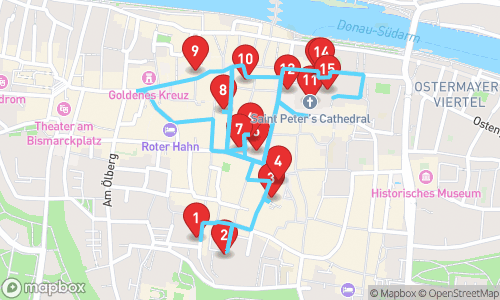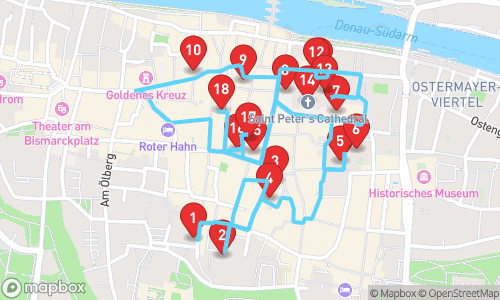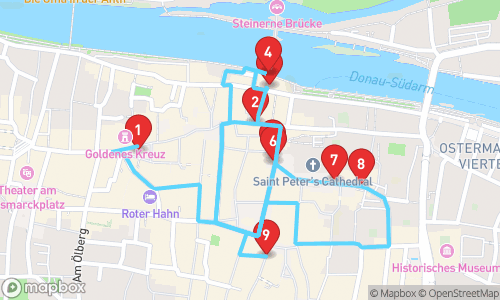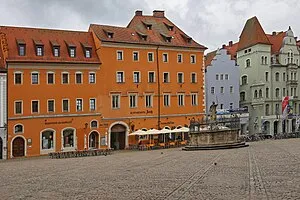
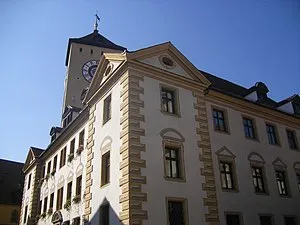
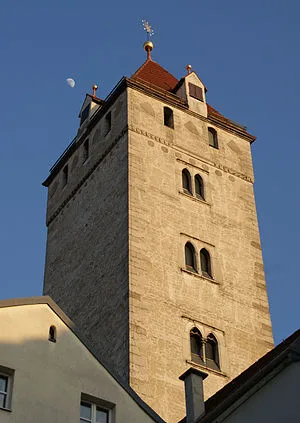
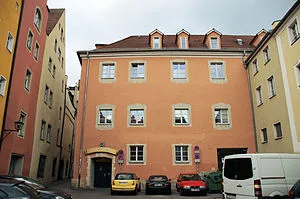
Timeless Tales: A Historical Journey Through Regensburg

Tour Guide
Ryan Multilingual
Welcome to Regensburg! On this GPS guided audio tour, we will visit 15 stops on a route of 2.50km. This tour focusses mainly on history.
Locatello is an app where you can generate personal audio guided tours. Set your preferred distance, guide, language and theme, and a guided tour is created on the spot.
Walking Time
Distance
stops
Language
Tour Stops

Haidplatz (Regensburg)
Haidplatz is one of many squares in Regensburg's old town, having gained significance in the early Middle Ages due to its location near the Roman legionary camp and its development into a hub for public events in the late Middle Ages. Today, it is a bustling area with a mix of medieval and modern architecture, restaurants, and cafes.

Altes Rathaus, Regensburg
A historic complex of buildings, housing the Old Town Hall of Regensburg, with three parts: a medieval tower, a two-story Imperial Hall building, and a Baroque-style building with a tour desk and museum.

Goldener Turm
A 50-meter-high, nine-story tower built around 1250, known as the Golden Tower, featuring a unique combination of Gothic and Renaissance architectural styles.

Augustinian Monastery Regensburg
A former Augustinian monastery in Regensburg, Germany, built in the 13th century, known for its history of pilgrimage and notable Augustinian friars.
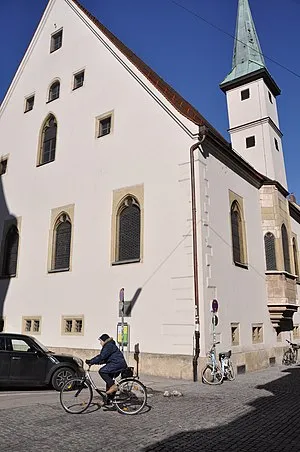
Bruderhauskirche St. Ignaz Regensburg
A Renaissance-era church building with a late Gothic façade, featuring a steeply pitched roof, pointed arch windows, and a slender, pointed tower.
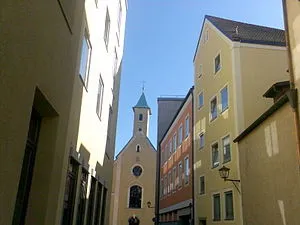
St. Kassian
A parish church in Regensburg, and the second oldest church in the city. It was founded in the 9th century and has undergone several renovations and expansions, with the current Baroque style dominating its interior and northern facade.
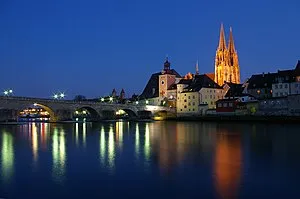
Old town of Regensburg with Stadtamhof
A remarkable preservation of medieval architecture, featuring over 960 historic buildings and urban structures, showcasing Regensburg's role as a significant trade center and diplomatic hub in Europe.
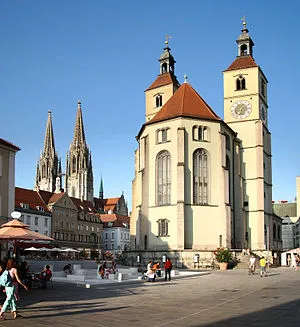
Neupfarrkirche in Regensburg
A parish church in Regensburg, built in 1519 as a Catholic wallfahrtskirche, but financial difficulties led to its conversion to a Protestant church after the introduction of the Reformation.

Regensburg Synagogue
A Regensburg Synagogue that was erected between 1210 and 1227 in Old Romanesque style and was the first architectural monument to be depicted in European printmaking.
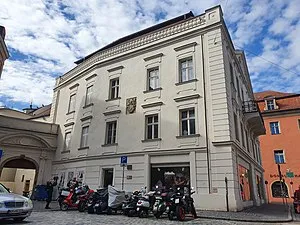
Weih Sankt Peter Monastery
A former Benedictine monastery, Weih Sankt Peter was founded around 1070 by Irish monk Marianus Scottus and became an important center for Irish Benedictine convents in medieval Germany.
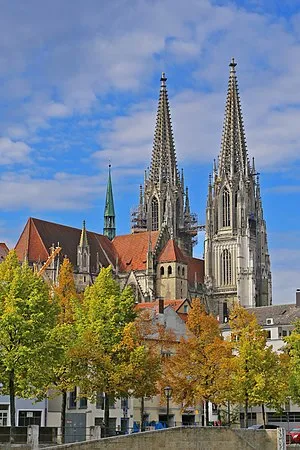
Regensburg Cathedral
A Gothic Catholic cathedral, an example of important German architecture, and the seat of the Catholic Diocese of Regensburg.

Reiterstandbild für König Ludwig I. von Bayern
A bronze equestrian statue of King Ludwig I of Bayern, erected by the grateful city of Regensburg in 1902, originally on Cathedral Square, later moved to Bahnhofsallee, and restored to return to its original location in May 2010.

Stiftskirche St. Johann
A Benedictine Church building, Stiftskirche St. Johann, features a mixture of Gothic and Baroque architectural styles, with ornate frescoes and stucco work, including the famous artwork "The Enthauptung Johannes des Täufers" by Johann Nepomuk Schöpf.
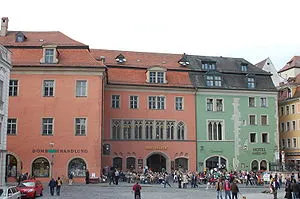
Haus an der Heuport
A historic four-winged Gothic townhouse with a large courtyard in Regensburg, featuring a mix of Gothic and Baroque architectural styles. The building's name originates from the former Regensburger Judenstadt and a nearby marketplace.
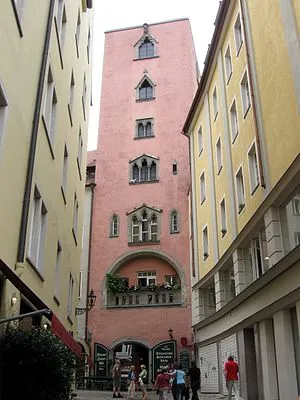
Baumburger Turm
A 28-meter high, seven-story tower with a crenellated roof, built at the end of the 13th century as a status symbol for the wealthy Regensburger Patrizier family Ingolstetter.
Audio Preview
30 secDownload App
Experience this tour and many more with our mobile app. Available for iOS and Android.
Audio Preview
Tour Map
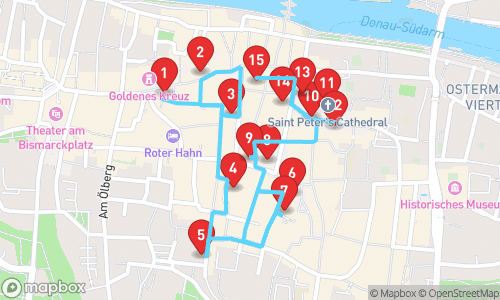
Quick Facts
- ✓GPS-guided navigation
- ✓Professional audio narration
- ✓Offline maps available
- ✓Free to try
Why Choose This Tour
Expert Local Guide
Narrated by Jenny Multilingual, specializing in general tourism
Flexible Timing
Take the tour at your own pace, any time of day
